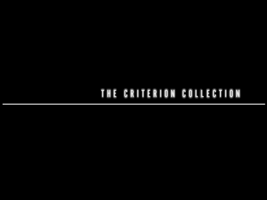2000:  (out of print 4/2010)
(out of print 4/2010)

contains:
• The Blood of a Poet (1930)
• Orpheus (1950)
• Testament of Orpheus (1959)
Criterion #66.
Criterion spine number 66 is not a movie. It’s not even a DVD.
Some things to consider:
14, 15, and 16 constituted the “Samurai Trilogy.” These were originally released separately, and only some years later bundled into a boxset. This boxset, offering as it did no new material, received no spine number of its own. Recently, this trilogy was revamped and repackaged, and is now only available as a set, in a single fold-out booklet-style package. This set itself has no number of its own: the spine is marked “14 / 15 / 16”. This is one way of cataloging.
51 was Brazil, the first set to be sold in a slipcase. This is a single movie and receives a single number, which appears on the fat spine of the slipcase. Inside the slipcase are three separate regular-width cases containing the three constituent discs. The spines of these cases are marked “51.1” “51.2” and “51.3”. This is another way of cataloging a boxset. Given that this is a single film, whereas the Samurai Trilogy is three films, there is a consistency thus far.
The present set is, like Brazil, three separate cases in a single slipcase. The slipcase is numbered 66. It is, like the Samurai Trilogy, a set of three separate movies. Those three movies are numbered 67, 68, and 69. Those three movies were not available separately. The set includes no additional disc or booklet that is not part of one of the three constituent movies. Thus this number 66 seems to stand oddly only for a piece of cardboard.
One might be tempted to say, alternately, that 66 is the set proper, and it’s the numbers 67, 68, and 69 which seem stand only for pieces of plastic. And yet this demonstrably not the case, because set 66 went out of print in 2010 (because they lost the rights to the first and third films in the trilogy), and then in 2011 Criterion came out with a new edition of the middle film, the one they still had the right to release, as a standalone spine 68. Which clinches the argument of which number is the silly number with no content: 66, this one.
Such a system is only absurd when the discs aren’t also sold separately, which in Criterion’s practice is frequently the case. The rest of the time it makes sense, for cataloging distinct shippable products with distinct prices. Either way, it will always put a kink in my game here, because I of course want to have the meaningless satisfaction of having written one blog entry for each number, and yet there’s nothing for me to blog about.
The obvious thing to write about would be the set as a whole, how the movies relate to each other, etc. But I can’t do that because I haven’t seen any of them yet. If that’s what they wanted out of me they should have assigned the numbers in the other order, with the set last. No way am I posting #66 after I’ve already posted #69. No way. Absolutely not. No.
You can look forward to more water-treading in the future:
86 is a slipcase for 87 and 88. Only available as a set.
124 is a slipcase for 125–128. Only available as a set.
167 is a slipcase for 168 and 169. Also separately.
179 is a slipcase for 180 and 181. Only available as a set.
185 is a slipcase for 186–188 and a repackaged copy of 5. Only available as a set.
203 is a slipcase for 204–206. Only available as a set.
And so on.
Possible topics for a few paragraphs of filler include:
1) thoughts about packages and packaging generally
2) thoughts about licensing for distribution, and the reasons why Criterion movies go out of print
3) thoughts about numbers
4) how amazing it is that I’ve actually watched 203 Criterion movies
5) whether the Zorg-Blon Tachyon Pulse Hyperpicture is really better than Blu-ray
6) this
And here’s our musical selection: the audio that accompanies the opening Criterion, Janus, and StudioCanal logos on the first disc.
(Interesting fact about low-end computers like mine: if the sound card is near the graphics card, you can hear interference corresponding to the level of activity in the graphics processor, which of course spikes when things move. If you turn it way up you can hear the logos coming and going.)